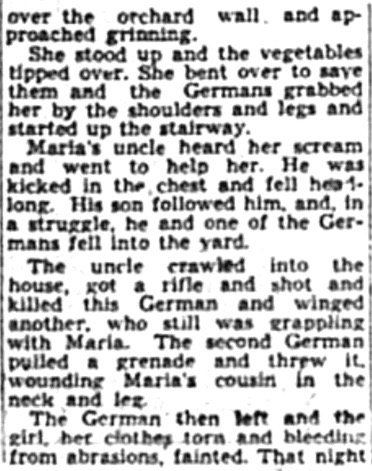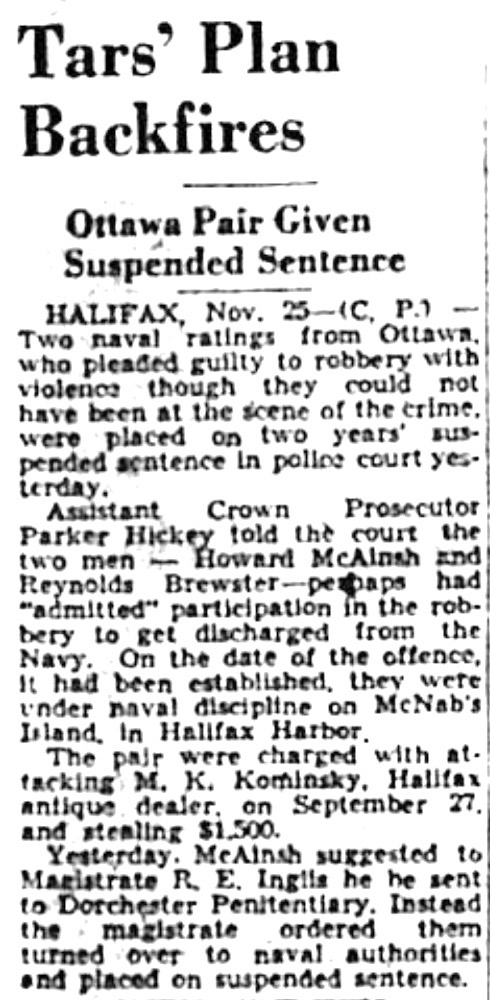The Slog Continues and Berlin is Getting Blasted
'Bomber' Harris is getting his wish. "Blast 'em, Boys. Let's end the war."
Introduction:
I tip my hat to The Montreal Star, its war correspondents (including Sholto Watt, he really gets around), and large team, for getting out a newspaper on a steady basis filled to the brim with a variety of updates from various war fronts.
As well, there is a stream of other news that helps provide a context for the Canadians in Combined Operations who are finished their role in Italy and have steamed back to ports in North Africa aboard their flotilla of landing crafts. By this time in November, 1943, the members of RCNVR and Combined Operations may already be in the United Kingdom, e.g., at HMS Folliot, and making plans for what they would do on their upcoming extended leave, which included for many a trip back to Canada with a fat pay packet.
In the stream of news that follows, one will find information about "the war's greatest air raid", and read that "Old Blood and Guts Patton" actually made an apology. We also learn that more Canadians are heading overseas, men and women, ably reported by 29-year-old Douglas Amaron, a CP war correspondent from Quebec City.
The following news clippings, editorial features and cartoons, artistic ads, etc. are all from the November 23 - 25, 1943, issues of The Montreal Star, available on microfilm at the University of Western Ontario.
Any questions or concerns can be directed to me at gordh7700@gmail.com: I will make every effort to reply promptly.
I clip just about every item from the desk or typewriter of Ross Munro, a very active and well-informed war correspondent with Canadian Press. In the report that follows, Mr. Munro includes details provided by Sholto Watt of The Star:
I don't think I have clipped many items from American writers but I will keep my eyes open for more from Gladwin Hill, for certain:
Regular readers of this site will likely know that I am all in favour of columns like the one below. Yes, it is by a Canadian writer. And, while reading we are introduced to many Canadians by name and address, basic details that may lead readers to a close or relative involved in WWII:
Patton was and is admired by many. But not all he did deserves praise:
Heavily damaged in September, the Tirpitz, Germany's largest battleship, is being moved for repairs. Would it arrive safely? Would it be repaired and return to service?
The following related information is listed on an online source:
I don't think I have seen anything in The Star about the November 12 attack but will keep my eyes peeled.
I include the following article because of its link to Dieppe and Sicilian battles, both events in which Canadians in Combined Operations (C.Ops.) were active, and at Dieppe many Canadians were taken prisoner, including a few members of C.Ops.
As well, besides the useful fact it contains many names and home addresses of troops, one member of C.Ops. who went to the U.K. in the first draft of Canadians in C. Ops., got married to a Scottish woman in Glasgow... and I have their wedding photo:
Eight Canadians from the first draft of RCNVR volunteers for C. Ops.
Location - HMS Northney (camp) on Hayling Island. Spring 1942
L-R: Al Adlington, Joe Spencer, Chuck Rose, Doug Harrison,
Art Bradfield, Don Linder, Joe Watson, Jake Jacobs.
Wedding Day. L-R: C. Rose, Al Adlington, Mary Adlington, Mary's sister
Mary came to Canada aboard the Isle de France (She told me so!)
Thousands upon thousands of landing craft - of all sizes, for troops, and trucks and tanks, etc. - were needed by Allied forces during WWII. Some used at Dieppe were made of plywood (e.g., some Higgins' boats) and couldn't stop a bullet, but still proved useful in many circumstances:
More news now follows, some about surprises. E.g., "What did Goering say?" And, "Who is that knocking on my door?"
How could you beat this surprise?
The Canadian Navy was growing stronger and contributing in many ways to ultimate Allied victory:
I include this next story because it reminds me of a young Al Kirby of Woodstock, who in late 1941, volunteered for Combined Operations while at HMCS Stadacona in Halifax. Al may have influenced several others to do so, including my father, because he had become enthusiastically interested in small, fast motor-torpedo boats (MTBs) while taking an RCNVR course.
About my father's entry into Combined Operations at the same time and place, I read the following in his Navy memoirs:
One day we heard a mess deck buzz or rumour that the navy was looking for volunteers for special duties overseas, with nine days leave thrown in. Many from the Effingham Division, including myself, once again volunteered. (Will I ever quit volunteering?) The buzz turned out to be true and we came home on leave, which involved three days coming home on a train, three days at home and three days on the train going back.
Page 8, "Dad, Well Done"
The buzz or rumour may have started with young Kirby. About that same time he writes the following:
In December of 1941, I was finishing my Seaman Torpedo Course at the Torpedo School in Halifax Dockyard, when I saw on the bulletin board, a notice asking for volunteers to go to England to train with the Royal Navy for hazardous duties on small craft.
I immediately thought, "MTBs". Now that sounded very exciting to a 17 year old RCN Boy Seaman, so I reported to the RPO and applied. The only qualification was that you be single and warm.
Page 9, The Yardarm, Vol 5. Number 1
Once in the United Kingdom, e.g., at HMS Northney (camp), the first volunteers for Combined Operations learned they would be training aboard landing crafts, not MTBs. Had Al Kirby waited a couple of years, he might have got his wish.
Please note: In the 4th paragraph above, under the sub-heading 'Aided in Sicily', we read that "two complete Canadian landing craft flotillas helped land the British 8th Army in Sicily."
According to stories, records and maps in "Combined Operations" by Londoner Clayton Marks, there were in fact 4 Canadian Flotillas of Landing Craft at work in Sicily, i.e., the 55th and 61st Flotillas of Assault Landing Craft (ALCs, troops carriers), and the 80th and 81st Flotillas of Landing Craft, Mechanised (LCMs, larger than ALCs, used to transport troops and much of the material of war)
Map found in Combined Operations. Dad worked aboard
LCMs for a period of about 30 days in Sicily, near Avola
As the sick and wounded were returned to Canada, out came the stories re their survival and some of the indignities suffered...
The Red Cross provided invaluable services. In Ticket to Hell via Dieppe (From A Prisoner's Wartime Log, 1942 - 1945 by A. Robert Prouse) one reads that many parcels did not make it to the POWs. The Germans ate the food.
Readers can find significant passages from Prouse's detailed book by linking to Passages: Ticket to Hell.

I guess the lesson learned by the troubled tars is... if you want out of the Navy then do not volunteer in the first place.
More from November and December will follow.
Unattributed Photos GH






























































No comments:
Post a Comment